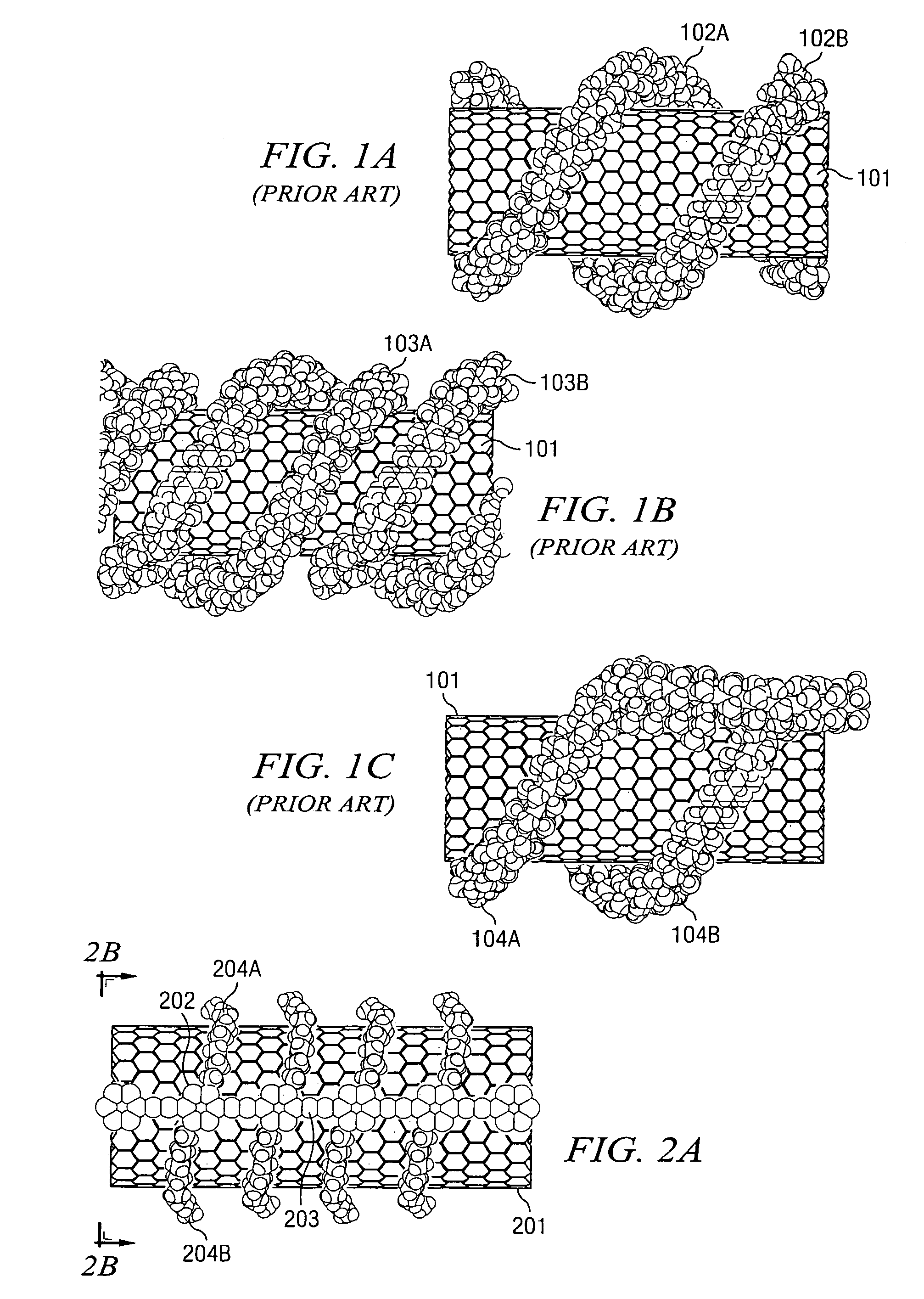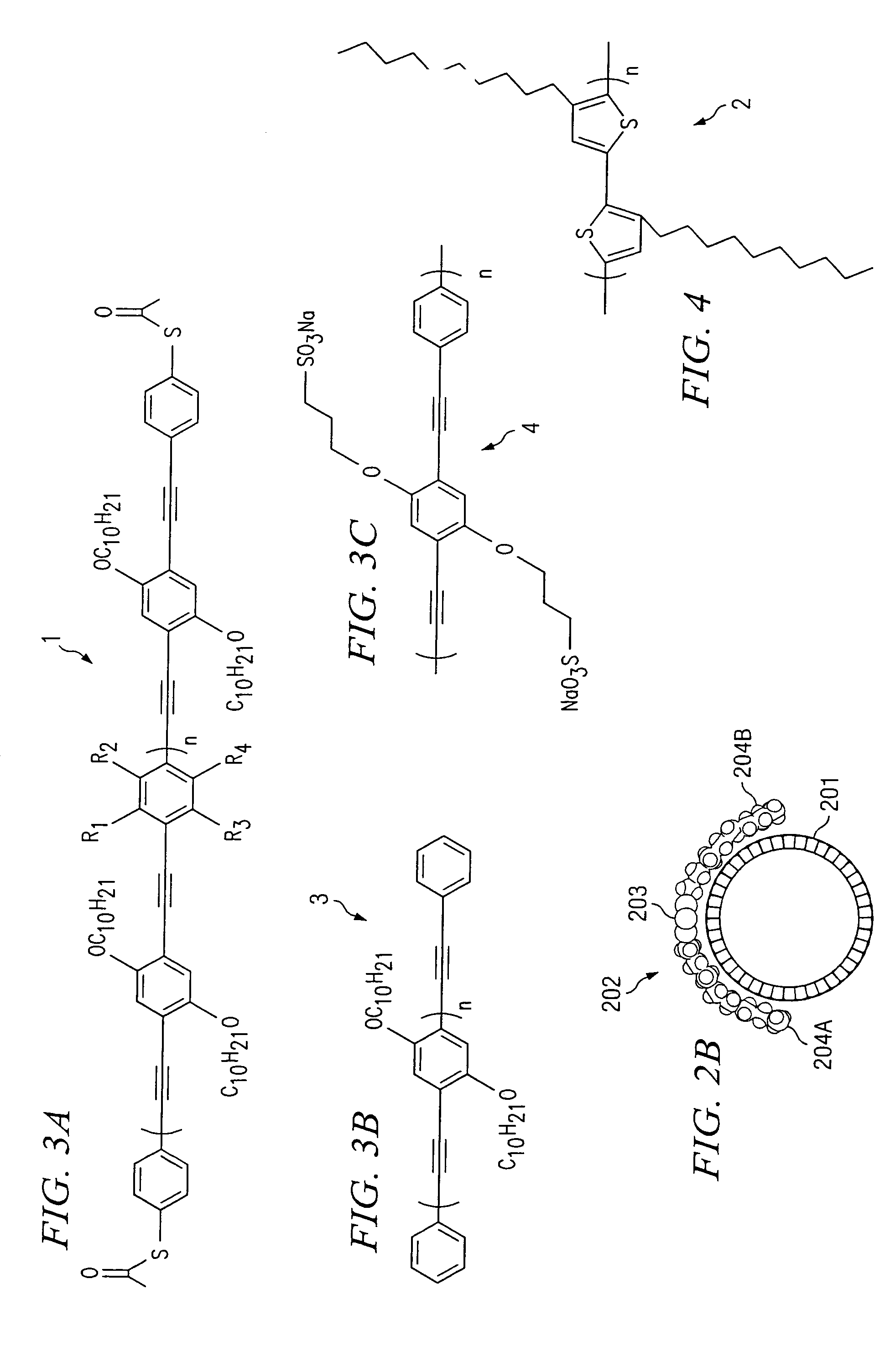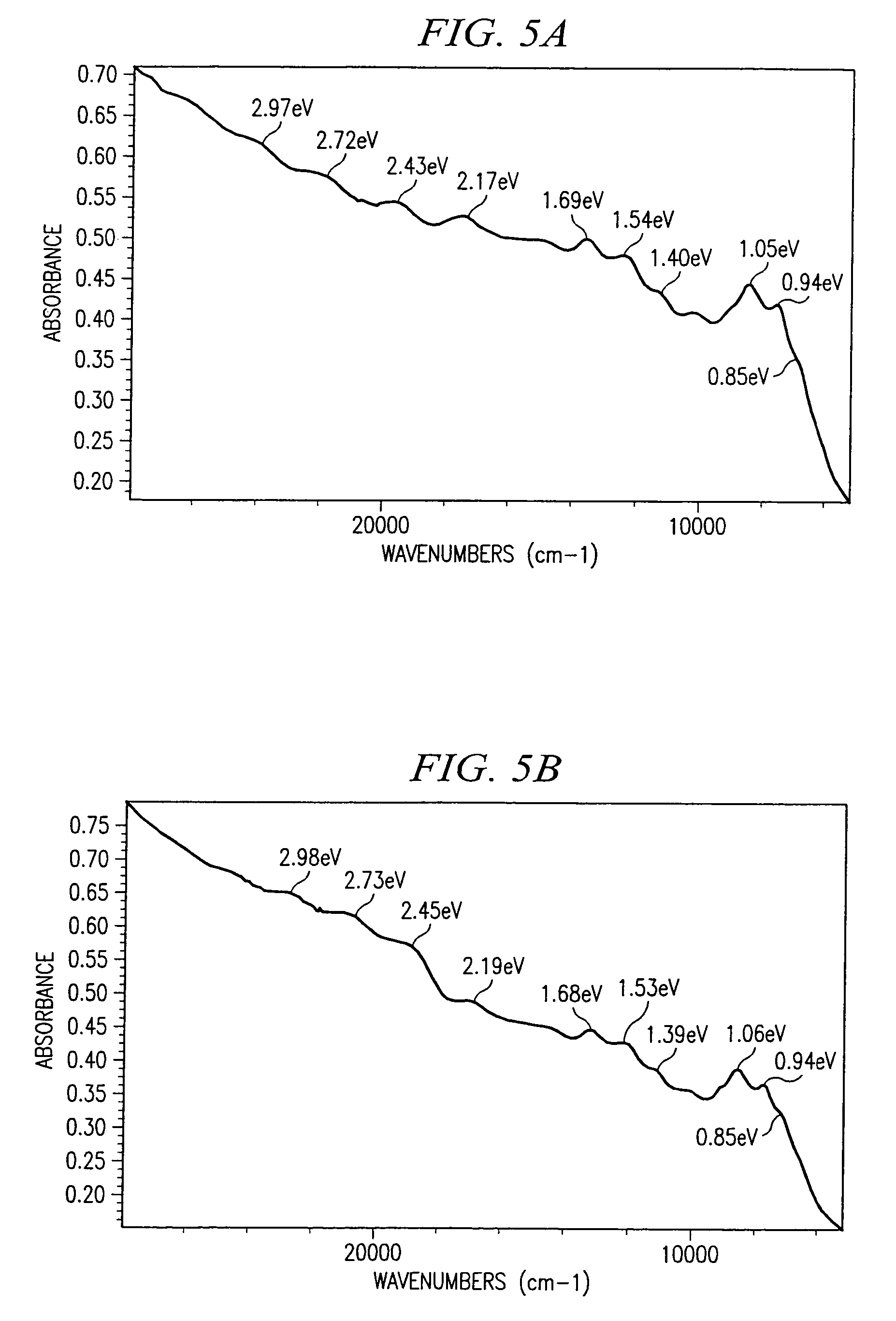Polymer and method for using the polymer for solubilizing nanotubes
a technology of nanotubes and polymers, applied in the field of nanotube solubilization, can solve the problems of non-covalent bonding or otherwise associating of polymers with nanotubes
- Summary
- Abstract
- Description
- Claims
- Application Information
AI Technical Summary
Benefits of technology
Problems solved by technology
Method used
Image
Examples
Embodiment Construction
[0035]Various embodiments of the present invention are now described with reference to the above figures. Embodiments of the present invention provide a new approach to solubilizing nanotubes in solvents. Advantageously, certain embodiments of the present invention may enable solubilization in organic solvents, and certain embodiments may enable solubilization in aqueous solvents. This approach is based on a discovery that carbon nanotube surfaces can be functionalized in a non-wrapping fashion by functional conjugated polymers. For instance, an example molecular model of a polymer that associates (e.g., noncovalently bonds) with a carbon nanotube in a non-wrapping fashion is shown in FIGS. 2A–2B. FIG. 2B is a cross-sectional view of FIG. 2A taken as indicated in FIG. 2A. As shown in this example, a carbon nanotube (and more specifically a single-walled carbon nanotube in this example) 201 has polymer 202 associated with it in a non-wrapping fashion therewith.
[0036]Polymer 202 compr...
PUM
| Property | Measurement | Unit |
|---|---|---|
| Temperature | aaaaa | aaaaa |
| Composition | aaaaa | aaaaa |
| Vacuum | aaaaa | aaaaa |
Abstract
Description
Claims
Application Information
 Login to View More
Login to View More - R&D
- Intellectual Property
- Life Sciences
- Materials
- Tech Scout
- Unparalleled Data Quality
- Higher Quality Content
- 60% Fewer Hallucinations
Browse by: Latest US Patents, China's latest patents, Technical Efficacy Thesaurus, Application Domain, Technology Topic, Popular Technical Reports.
© 2025 PatSnap. All rights reserved.Legal|Privacy policy|Modern Slavery Act Transparency Statement|Sitemap|About US| Contact US: help@patsnap.com



